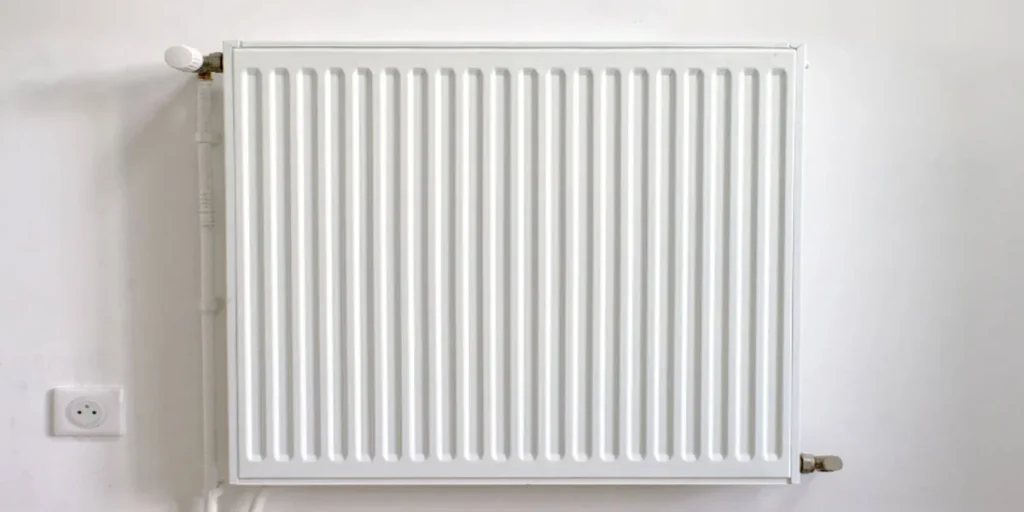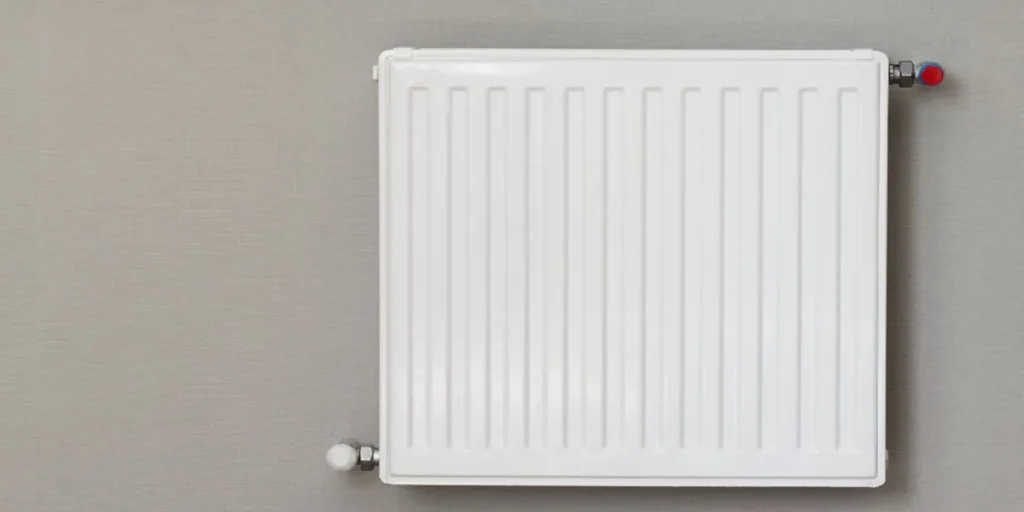A typical car radiator weighs between 10 to 20 pounds (4.5 to 9 kg). The exact weight depends on the radiator’s size, material, and design.
Radiators play a crucial role in maintaining your vehicle’s performance by ensuring the engine operates at an optimal temperature.
Constructed primarily from aluminum or brass and copper, radiators are a key component in your car’s cooling system.
They disperse heat from the coolant liquid to the air, preventing the engine from overheating.
Vehicle owners should be aware of their radiator’s condition and weight, as a heavier brass and copper radiator might offer more durability but also increase the vehicle’s overall weight, potentially affecting fuel efficiency.
Lightweight aluminum radiators are common in modern cars, offering a balance between efficiency and cooling performance.
Whether you’re a mechanic, a car enthusiast or simply a curious owner, understanding the nuances of your car’s radiator can help in maintaining your vehicle’s health and longevity.
Decoding Radiator Weight Factors
Wondering about the weight of a radiator in your car or heating system? It’s crucial to understand the factors that influence how much a radiator weighs.
From the materials used in construction to the various sizes on the market, several aspects determine the weight and, consequently, the handling, shipping, and installation aspects of your radiator.
Let’s explore these variables and give a clear picture of what to expect when dealing with radiator weight.
Material Composition
The weight of a radiator significantly depends on what it’s made of. Most radiators are made from either cast iron, aluminum, or steel, which all have different densities.
Cast iron radiators are the heaviest, known for their old-school charm and high heat retention.
On the flip side, aluminum radiators are much lighter, making them easier to install and faster to heat up. Steel sits in the middle, offering a balance between durability and weight.
Common Sizes And Their Weights
Not all radiators are created equal in size. Here’s how they typically measure up:
| Size (in inches) | Cast Iron | Aluminum | Steel |
|---|---|---|---|
| Small (20x20x10) | 50 lbs | 10 lbs | 30 lbs |
| Medium (30x30x10) | 150 lbs | 15 lbs | 45 lbs |
| Large (40x40x10) | 250 lbs | 20 lbs | 60 lbs |
Small radiators for compact spaces can be quite light, especially in aluminum form. A medium-sized radiator is typically used in standard rooms with moderate heating needs.
Large radiators are required for extensive areas and therefore weigh considerably more, particularly if made from cast iron.
Types Of Radiators And Varied Weights

When choosing a radiator, weight matters. Different types of radiators have different weights.
This can affect installation and support. Let’s look at common radiator types and their weights.
Traditional Cast Iron Models
Cast iron radiators are classic. They have a vintage look. They are very heavy. For example, a small cast iron radiator might weigh about 100 pounds.
A large one can weigh over 500 pounds. Here are some typical weights:
- Small cast iron radiator: ~100-150 lbs
- Medium cast iron radiator: ~250-300 lbs
- Large cast iron radiator: 400+ lbs
These weights mean you need strong floors. Also, installation often needs more people.
Modern Aluminum Units
Aluminum radiators are lighter. They are modern. They heat up and cool down fast. They suit newer homes. Here is what they weigh:
- Small aluminum radiator: ~10-20 lbs
- Medium aluminum radiator: ~20-30 lbs
- Large aluminum radiator: 30-50 lbs
They are easier to handle. They need less support than cast iron. They are great for walls that can’t hold much weight.
Radiator weight affects many things. Think about floor strength and wall support. Always check the weight before you buy.
Radiator Weight By Vehicle Type

Understanding the weight of a radiator can help estimate overall vehicle mass. Various vehicles come with different sized radiators.
Let’s explore how radiators differ in weight according to vehicle types.
Compact Cars Vs. Heavy-duty Trucks
When considering compact cars, radiators are usually lighter. They typically weigh between 10 to 15 pounds. This supports the car’s need for efficiency.
Heavy-duty trucks, on the other hand, require larger radiators for their powerful engines. Truck radiators can weigh up to 100 pounds or more. Here are some key differences:
- Compact car radiators – smaller in size, use less material.
- Truck radiators – larger, handle more fluid, built to last.
Electric Vehicles And Hybrid Differences
Electric vehicles (EVs) have innovative cooling systems different from traditional cars. Their radiators weigh less, often between 6 to 10 pounds.
Hybrid vehicles blend standard engines with electric components. Hybrid radiators mimic compact car sizes. They still maintain a lighter weight for fuel efficiency, generally weighing around 10 to 20 pounds.
| Vehicle Type | Radiator Weight |
|---|---|
| Compact Cars | 10-15 lbs |
| Heavy-Duty Trucks | Up to 100 lbs+ |
| Electric Vehicles | 6-10 lbs |
| Hybrids | 10-20 lbs |
Impact Of Weight On Performance And Efficiency
Understanding a radiator’s weight is crucial in assessing a vehicle’s overall performance and efficiency.
Every extra pound can influence how a car handles and consumes fuel. With performance and cost-saving in mind, let’s explore these effects further.
Fuel Economy And Vehicle Dynamics
Vehicle weight plays a significant role in fuel consumption. Lighter cars generally need less energy to move, leading to improved fuel economy.
Radiators may not be the heaviest component, but their weight contributes to the total mass.
Manufacturers often strive for a balance between durability and mass when designing radiators.
- Less weight equals better fuel savings.
- Optimized weight contributes to smoother acceleration and deceleration.
- Weight distribution affects stability and cornering.
Handling And Load Considerations
Handling is critical for driver safety and comfort. A heavy radiator might alter the vehicle’s center of gravity.
This shift can change how the car turns corners or brakes. Load considerations are also paramount, especially in commercial vehicles.
A lighter radiator may allow for more cargo or passengers.
- Weight influences the suspension’s ability to absorb road shocks.
- Properly balanced weight ensures predictable handling.
- Excessive front weight might lead to understeer, hindering performance.
Installation And Transportation Challenges
Understanding the weight of a radiator is crucial before installation or transportation. Radiators vary widely in weight.
They can be as light as 10 pounds or as heavy as 100 pounds or more. Due to the significant weight, installing or moving a radiator brings about unique challenges.
Safe handling is essential to avoid injuries or property damage. Also, consider the complexity when tackling a DIY radiator replacement.
Safe Handling And Movement
Carrying a heavy radiator requires careful planning. Use the proper techniques to ensure safety.
Always keep your back straight and lift with your legs. It is wise to ask for help if the radiator is too heavy for one person.
- Clear your path before lifting. Make sure there is nothing on the floor.
- Use a dolly or hand truck for transportation across longer distances.
- Wear protective gloves and footwear to protect your hands and feet.
- Secure the radiator on the transporting vehicle.
Tips For Diy Radiator Replacement
Replacing a radiator by yourself can save money. However, prepare properly before starting the job. These tips help ensure a successful DIY project.
- Check the radiator model and size. Choose the correct one for your system.
- Turn off the heating system and let it cool down.
- Drain the old radiator. Keep towels and a bucket handy for leaks.
- Disconnect and carefully remove the old radiator.
- Mount the new radiator using proper brackets and tools.
- Reconnect and refill the system. Check for leaks.
Remember to follow the manufacturer’s instructions. Watch online tutorials if necessary. Keep your tools and supplies within reach. Take your time to ensure safety and accuracy.
Recycling And Disposal Of Old Radiators
When a radiator reaches the end of its life, it’s important to consider environmentally responsible ways to dispose of it.
Old radiators can be large and heavy, making their disposal a bit more complex. The materials, typically metal, have value on the recycling market.
Proper recycling and disposal of these items are essential for environmental health and adherence to local regulations.
In this section, we will explore key considerations you must take into account.
Environmental Considerations
Recycling old radiators is critical for environmental protection. The following points outline why proper disposal matters:
- Prevents landfill overuse: Recycling keeps bulky items out of the waste stream.
- Saves resources: Recovered materials can be reused, reducing the need for new raw materials.
- Reduces pollution: Proper recycling processes decrease hazardous emissions.
Responsibilities And Regulations
Homeowners and businesses must follow local laws when disposing of old radiators. These laws vary by location and can include:
- Obtaining special disposal permits
- Using certified recycling or disposal services
- Adhering to hazardous materials handling regulations
Failure to comply can result in fines or legal issues.
| Step | Action |
|---|---|
| 1 | Identify local disposal regulations |
| 2 | Find a certified recycling center |
| 3 | Prepare the radiator for recycling |
| 4 | Transport the radiator safely |
| 5 | Complete final disposal or recycling |
FAQ About the Weight of a Radiator
How Much Does An Average Car Radiator Weigh?
An average car radiator typically weighs between 10 to 20 pounds (4. 5 to 9 kg).
This varies depending on the size and material, with larger vehicles having heavier radiators.
What Factors Affect A Radiator’s Weight?
The weight of a radiator is influenced by its size, material, and design. Aluminum radiators are lighter than those made of brass or copper.
Additional features, like built-in transmission coolers, can also add weight.
Is A Heavier Radiator Better For Cooling?
Not necessarily. Cooling efficiency is determined more by design and surface area than weight.
A well-designed lightweight aluminum radiator can cool as efficiently as a heavier one.
Can I Replace My Radiator With A Lighter One?
Yes, you can replace your radiator with a lighter aluminum one if it’s compatible with your vehicle’s cooling system specifications and mounting points.
Conclusion
Understanding radiator weights is crucial for safe handling and vehicle maintenance. Whether you’re a mechanic or a car enthusiast, recognizing the various weights ensures proper installation and operation.
We hope this guide has been informative, allowing you to make more informed choices on your automotive journey.
Remember, the right knowledge leads to smoother rides. Drive safe!
Resources:
https://www.energy.gov/energysaver/heat-distribution-systems
https://www.gsa.gov/real-estate/historic-preservation/historic-preservation-policy-tools/preservation-tools-resources/technical-procedures/refinishing-a-radiator
